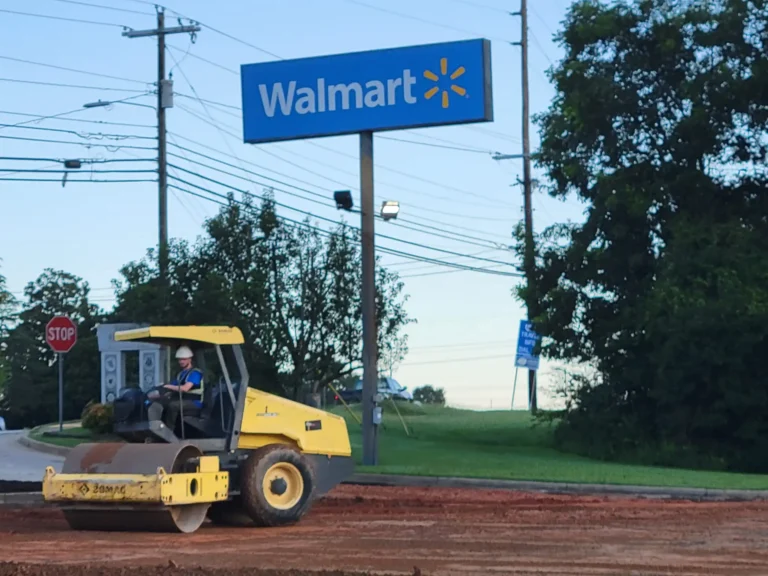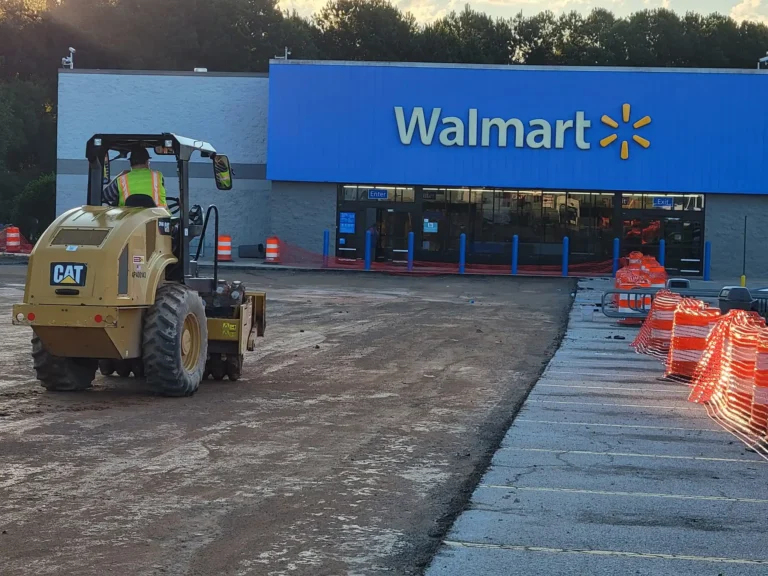The Occupational Safety and Health Administration (OSHA) is committed to keeping workplaces safe. Although many of the details for warehouse striping are left up to the interpretation and customization of each business owner, OSHA provides some clarity on color choices and best practices for optimal safety. Having your warehouse properly designated can prevent injury to your staff, improve efficiency, and protect your assets. Navigating the process can seem overwhelming, so the Blackjack Paving can help you determine a safety plan using warehouse striping to fit your needs.
Know Your Colors:
Each color used to designate in your warehouse communicates different messages based upon OSHA’s standards.
Yellow: Yellow is associated with caution. This color should be used to mark walkways or indicate physical dangers, such as trip hazards.
Red: Red is required by OSHA to mean danger and stop, which makes sense based upon stop signs being red. Whether the striping is being used to make a stop sign or indicate dangerous equipment, red will communicate danger so your employees will stop at once.
Orange: Orange is intended to be used as a warning. The best application would be warning about heavy machinery or energized equipment. The bright hue of orange will get employees’ attention and prevent incidents.
Green: Green means good, go, or safe based upon OSHA’s color system. You could designate safe locations for your employees or direct employees to first aid stations, showers, safety equipment, etc.
Blue: Blue is the color choice for information or to announce equipment under repair. You could utilize blue to highlight important information for your employees.
Contrasting Stripes/Patterns: If you use 2 contrasting colors of striping, you are grabbing the attention of your employees. The two contrasting colors are more eye-catching than a single color, so this color designation is best used for truly hazardous materials or redirecting employees from a dead end or safety hazard.
Now that you understand your safety colors, consider these important guidelines:
Make Sure Your Staff Understands the Plan—A warehouse striping plan will only be effective if your employees know the designated colors and messages associated with them. Before releasing your staff to work in your newly marked warehouse, provide them a clear explanation about the new safety plan. You could even provide each employee with a color coded map of the facility while they are becoming comfortable with the system. If desired, you could even let your employees help you make your safety plan and choose what parts should be designated with which colors. Whether they help in the planning phases or not, your employees must understand your plan to make your efforts to follow OSHA’s standards effective.
Keep It Simple—Before you start painting your warehouse up like a rainbow, consider what markings are truly essential. Less can be more because too many designations may be too confusing. You want the striping to get your employees’ attention and help make them more effective, not slow them down trying to remember the plan.
Prioritize Pathways and Aisles—Clearly marked aisles and pathways are essential to the efficiency and safety of your warehouse. Pathways are generally done in yellow to grab the eye. If you choose only one thing to do with your warehouse striping, pathways and aisles should be your choice. They will make the biggest difference for your company in keeping your work moving and your employees safe from on the job injuries.
If you are interested in professional warehouse striping, reach out to Blackjack Paving. We are well-versed in OSHA’s practices and can help you create a safe and effective striping plan.












